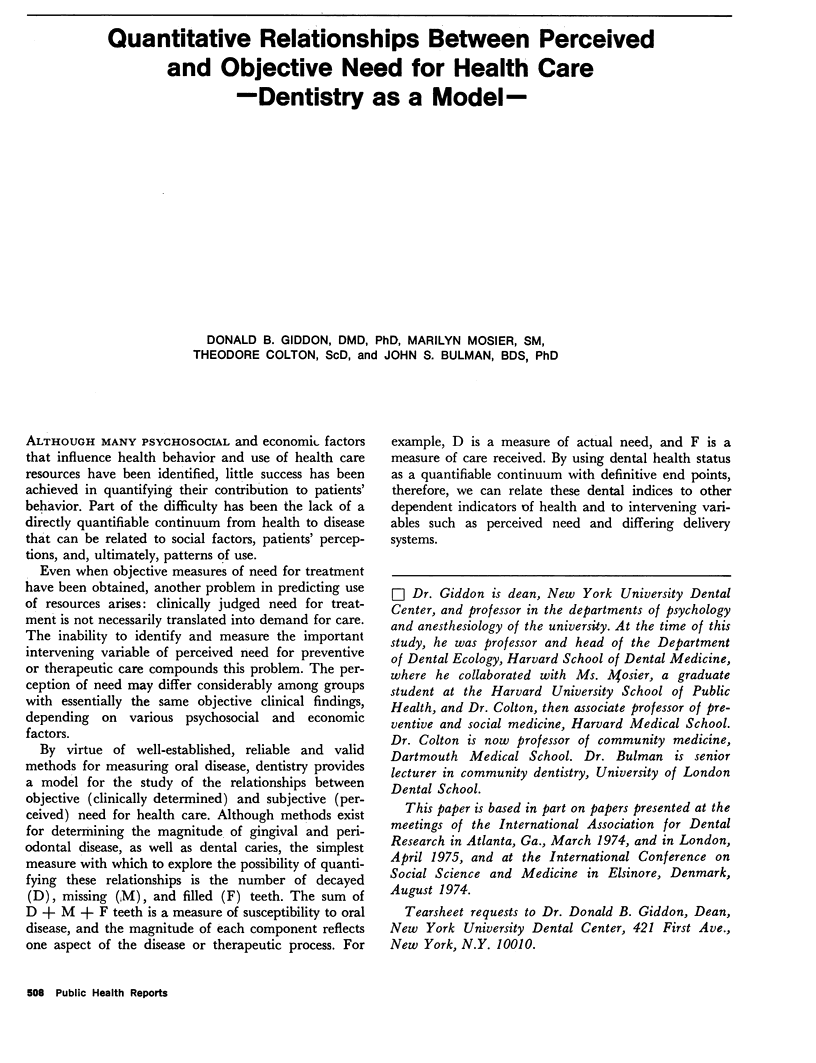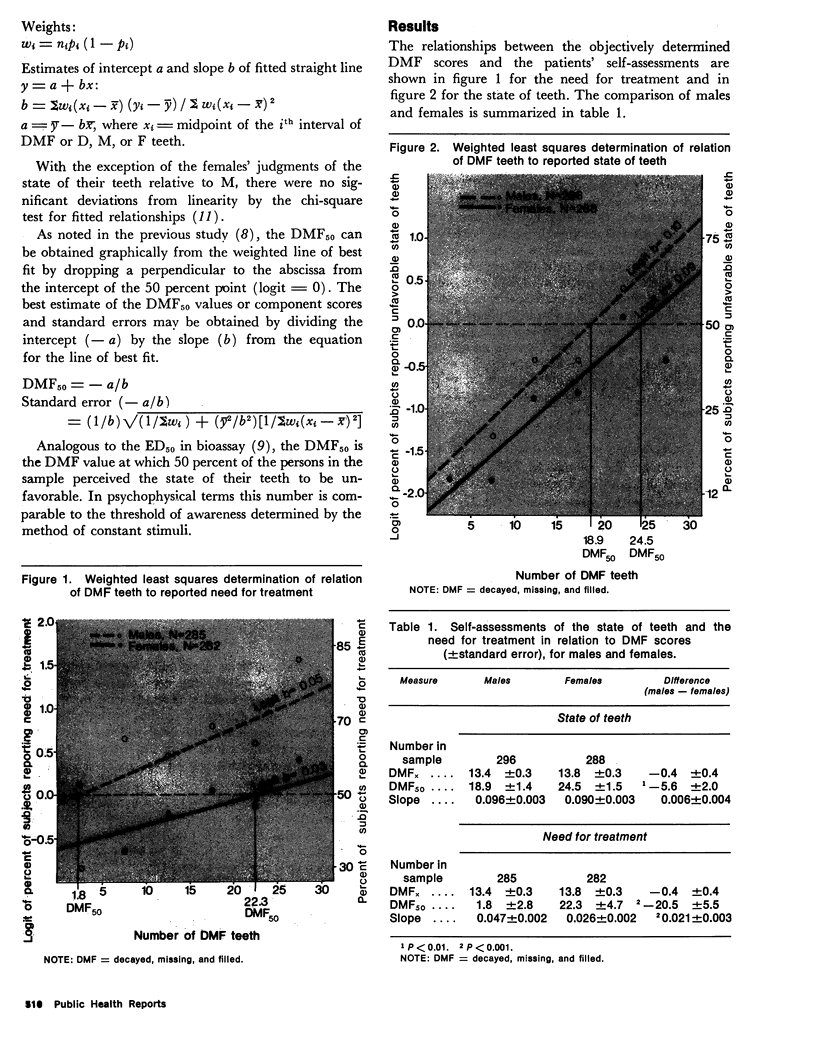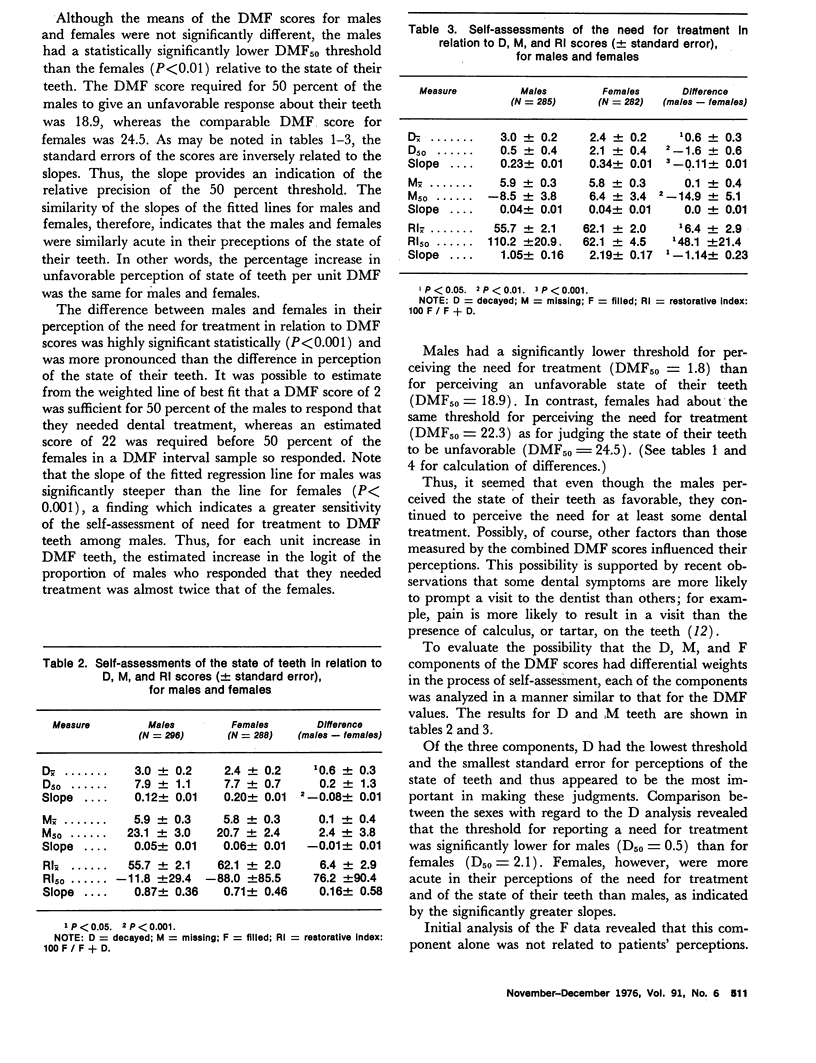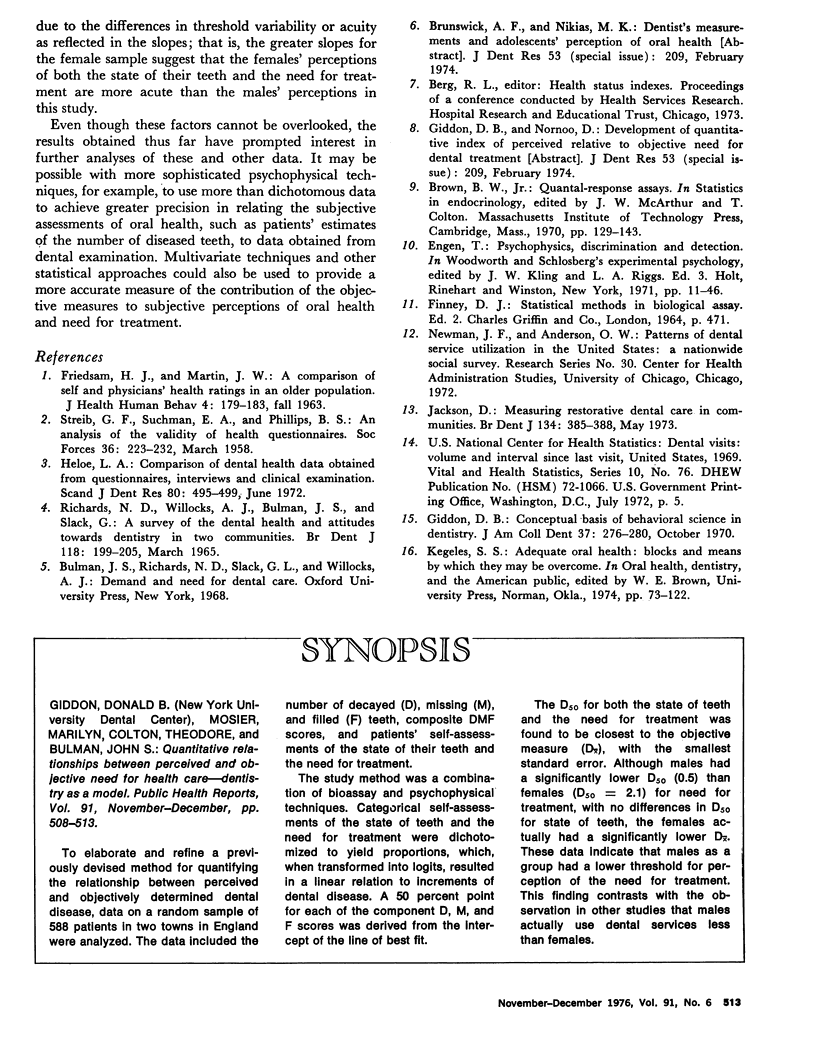Abstract
To elaborate and refine a previously devised method for quantifying the relationship between perceived and objectively determined dental disease, data on a random sample of 588 patients in two towns in England were analyzed. The data included the number of decayed (D), missing (M), and filled (F) teeth, composite DMF scores, and patients' self-assessments of the state of their teeth and the need for treatment. The study method was a combination of bioassay and psychophysical techniques. Categorical self-assessments of the state of teeth and the need for treatment were dichotomized to yield proportions, which, when transformed into logits, resulted in a linear relation to increments of dental disease. A 50% point for each of the component D, M, and F scores was derived from the intercept of the line of best fit. The D50 for both the state of teeth and the need for treatment was found to be closest to the objective measure (Dx), with the smallest standard error. Although males had a significantly lower D50 (0.5) than females (D50=2.1) for need for treatment, with no differences in D50 for state of teeth, the females actually had a significantly lower Dx. These data indicate that males as a group had a lower threshold for perception of the need for treatment. This finding contrasts with the observation in other studies that males actually use dental services less than females.
Full text
PDF





Selected References
These references are in PubMed. This may not be the complete list of references from this article.
- Giddon D. B. Conceptual basis of behavioral science in dentistry. J Am Coll Dent. 1970 Oct;37(4):276–280. [PubMed] [Google Scholar]
- Heloë L. A. Comparison of dental health data obtained from questionnaires, interviews and clinical examination. Scand J Dent Res. 1972;80(6):495–499. [PubMed] [Google Scholar]
- Jackson D. Measuring restorative dental care in communities. Br Dent J. 1973 May 1;134(9):385–388. doi: 10.1038/sj.bdj.4803007. [DOI] [PubMed] [Google Scholar]
- RICHARDS N. D., WILLCOCKS A. J., BULMAN J. S., SLACK G. L. A SURVEY OF THE DENTAL HEALTH AND ATTITUDES TOWARDS DENTISTRY IN TWO COMMUNITIES. 1. SOCIOLOGICAL DATA. Br Dent J. 1965 Mar 2;118:199–205. [PubMed] [Google Scholar]


